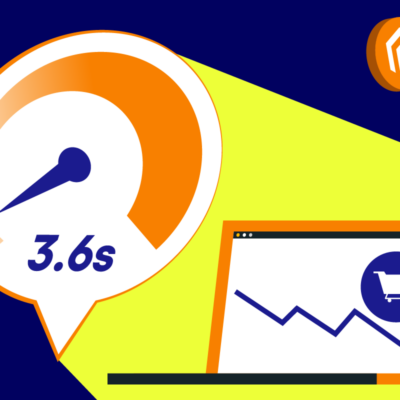Database integration (sometimes also referred to as data integration) is a relatively new technological process that plays a bigger and bigger role in successful online enterprises, including eCommerce. Even if up till now you didn’t have a need to know what it is, let alone actually do it – quite probable this is something you will be looking into in a few years.
So, what is database integration, why is it important for an online business, and how can you use it? In today’s blog post we’ll try to provide answers to those questions. We hope it will be useful for digital marketing managers and marketing specialists – even with limited prior technical experience.
What is a database
Let’s start from the very beginning – what is a database. Many years ago, in the beginning of the Internet, a typical website was little more than a collection of files in a folder on a server. Those files would have been written in a special format, HTML, which essentially is a plain text, with a little formatting on top of it. Whenever a user wanted to view a page, the server would send the file to display in an internet browser.
As websites grew more and more complex, such an approach became too limiting. Text-based files are too cumbersome as you need to regularly update thousands of them. The solution to this problem was a database: a system that stores all information, and allows managing it in a convenient, user-friendly way.
One of the most prominent and familiar examples of using databases is a Content Management Systems (CMS): a program that allows users to create, edit and publish information on websites, with zero technical experience. If your website was developed in the last 15-20 years – most probably it uses a CMS. The most popular systems on the market nowadays are WordPress, Drupal, Joomla but there are literally thousands of different ones to choose from.
eCommerce will not be possible without databases – modern eCommerce systems, like Magento in China: 8 Localization Features for a Successful Market EntryFrom Social Login through WeChat to Mini Programs and Fapiao Support, here are the top eCommerce Must-Haves to boost your eCommerce sales in China.Magento, use databases to store product details, purchase history, buyers information – making it possible to function in the first place.
CMS and eCommerce systems are not the only examples. Pretty much everything in the modern internet operates using databases. ERP (resource management), CRM (customer relationship) systems, analytical systems, asset management, all sorts of web-applications – all these applications are using databases.
There are different types and implementations of database systems. Most popular are so-called relational (or SQL) databases, that store information in a form of tables; and non-relational (also known as no-SQL) databases, that store data in less strictly defined formats. Both options have particular implementations (SQLite, MySQL, Postgres and so on) – there are hundreds of open-source and paid options to choose from.
What is database integration
Database integration is a process of combining information from two or more databases, so it can be used together. Depending on the nature of the databases being integrated, there are a few options that enterprises can choose.
On-premise database integration performed on local companies servers, often by companies own IT specialists. While it is generally better options for simple projects, it requires a certain level of expertise and infrastructure to implement. A company also accepts all the risks in case anything goes wrong.
Cloud-based database integration is an option that gets more and more popular with an abundance of providers specializing in these services. Solutions range from simple DIY options like Google DataStudio to complex customisable SaaS systems that come with ready to use components and a team of developers that will take care of all technical issues.
Benefits of Data integration
Gaining control over information
Information that you have in your system is only as good as your ability to use it. If accessing information is problematic,if you have bottlenecks caused by incompatibility, remote locations, different format, delays – this can render most of the data useless. Database integration makes sure the data is being controlled from one centralized location, improves reliability and delivery time.
Single source of truth
This funny sounding term (often shortened to SSOT), describes a popular concept of having only one source of information for every piece of data in the organization. Few things can be more annoying than having inconsistent data in different systems: one of them has to be wrong, but it is often impossible to tell which one.
Data integration and SSOT are aimed at alleviating such problems, making sure such a situation never happens. If information has to be present in several systems at the same time – only one has to contain the original data and others only hold a regularly synchronized copy.
Regulation compliance
In today's world managing data assets is a process that involves an inherent risk of leakage, data loss, and even hacker attacks. Multiple countries implement a range of legislation to address such problems, from European GDPR to China's PIPL: Overview & Key Considerations for eCommerceKey aspects of PIPL and its impact on cross-border & domestic eCommerce, with insights for foreign brands navigating China’s data laws.Chinese PIPL. Enterprises are to follow such regulations and up their security game – something that is extremely difficult to do, if your system is a mixed bag of applications, built and managed in a dozen different places. Database integration is the first step to making your information infrastructure robust and secure, as required in today’s world.
Examples of data integration in eCommerce
Database Merge
One of the standalone examples of database integration is when two similar databases are being merged to form a combined one. It happens when two businesses merge, when different departments start using a unified system, when legacy and modern data has to be unified into one dataset.
In this case data integration usually comprises such operations and unifying data standards, deduplication, cleansing, setting up new rules and standards. It can be particularly challenging, if previously used systems are built in a significantly different way.
Data integration for analytics
It is normal for an eCommerce to use a large number of different data and analytical systems. Sales performance is tracked inside of your ERP solution, web behavior – in Google Analytics or similar service, eDM campaigns – in an eDM solution, and so on. Each of the systems can provide you with analytics on sales, web, behavior, email performance.
The most valuable analytical insights, however, can be generated when you start to combine these datasets. What kind of web behavior results in best sales, which email campaign generated the most leads, which PPC keywords are the best way to promote your product?
Of course, some of the answers can be obtained by using clever tagging techniques and cross referencing the data manually. But if you want to have a powerful automated system that provides a reliable and timely analytical picture – database integration is the way to go.
Data Warehouses / Data Lakes
To facilitate complex analytical projects, it is important to have full control of all the needed information. Data is cleaned, transformed and copied into one large storage – this popular type of database integration is known as Data Warehousing. This approach ensures quality and consistency of the information used to make business decisions.
Sometimes a company doesn’t even know what data can be of use. This is true for exploratory machine learning research, when a data scientist sieves through hundreds of various metrics, looking for correlations and dependencies. To make such research possible, all kinds of data sources are grouped together – from usual eCommerce well-defined parameters like sales and web behavior, to more exotic and unstructured ones like twitter feeds, call transcripts or IoT logs.
Such an approach to database integration is known as Data Lake, and it is a relatively new way to approach database integration. In the world with ever increasing amounts of generated data Data Lakes are a promising new way of using AI and machine learning technologies to generate business insights.
We hope the article gave you a useful overview of what data integration is and what it is used for, particularly in eCommerce development. We would like to continue this conversation and find out what database integration can do for your business – so drop us a line through the “Contact Us” form to get started.












